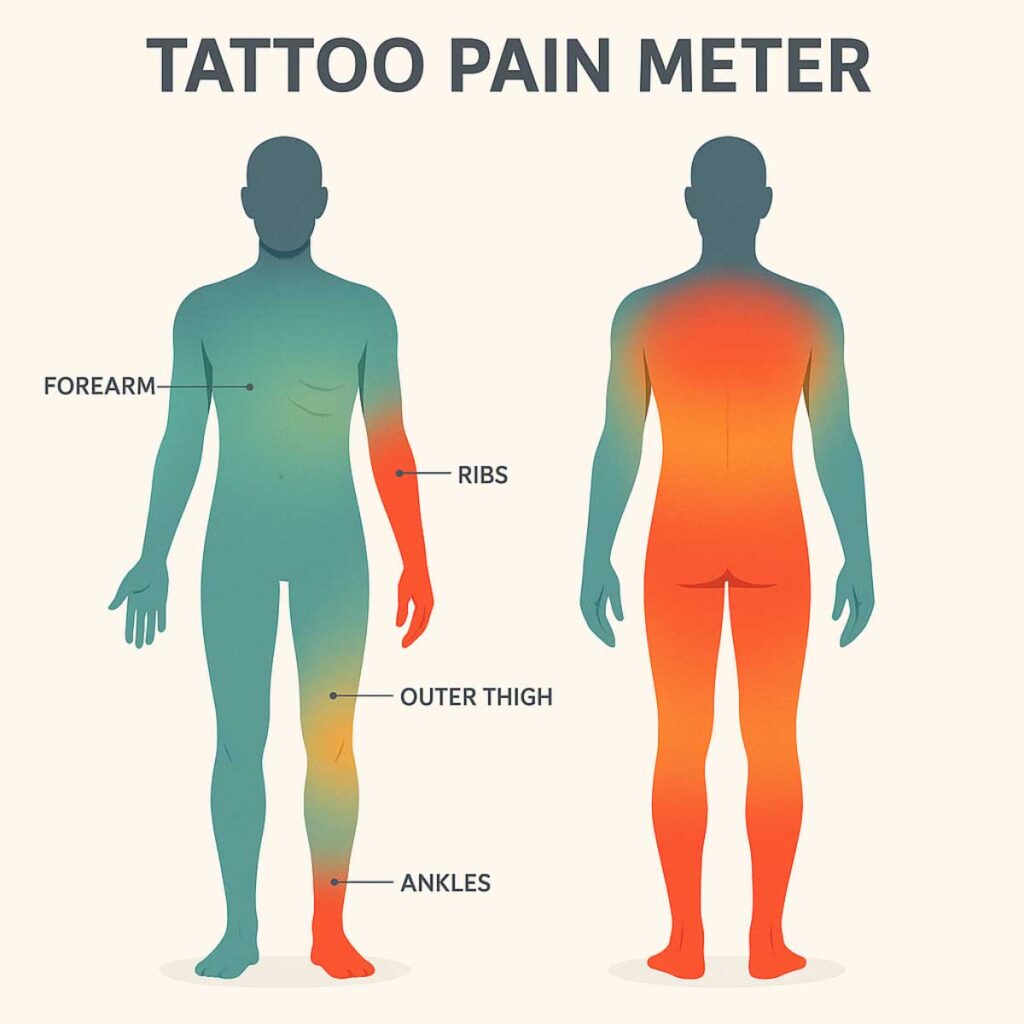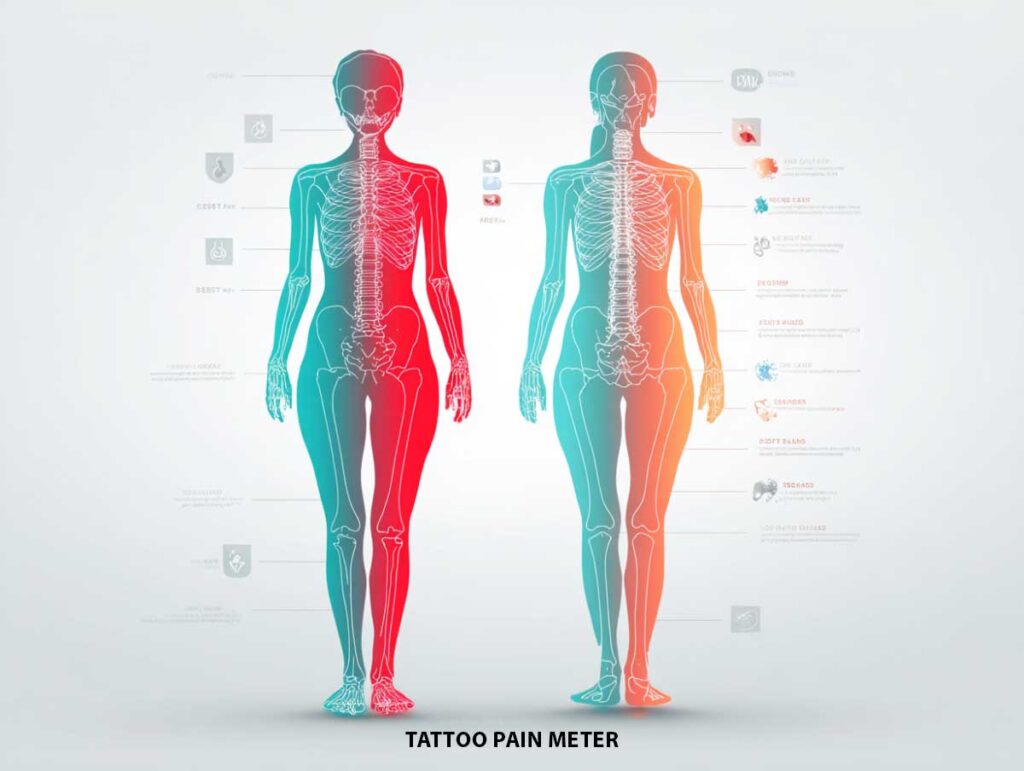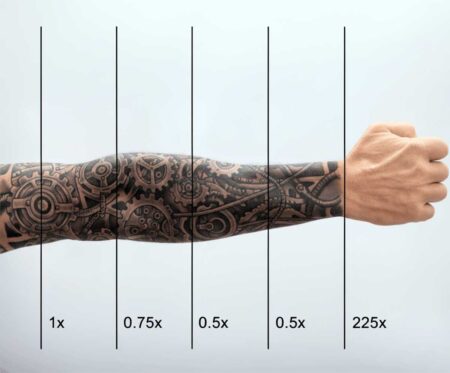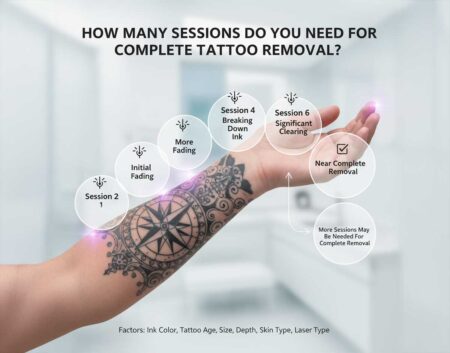Why I Built My Own Tattoo Pain Meter
When I booked my first forearm tattoo, every friend had a different horror story. Outer arm? “Barely a pinch.” Ribs? “Call your mom, you will cry.” I wanted something clearer than random anecdotes, so after twelve tattoos, three artists, and one memorable rib-cage dragon, I sketched a tattoo pain meter that rates each body zone from “cat scratch” to “yelp-out-loud.”
Below you will find the interactive meter, my first-hand pain logs, and the practical tricks that saved me a few decibels of swearing.
Hover and Learn: The Interactive Tattoo Pain Meter
How to use it: Hover (or tap on mobile) to light up a body region, then read the pain level and my quick tip below the figure.
Interactive Tattoo Pain Meter
Hover or tap a body region to see the typical pain level.
Why Some Spots Hurt More: A Quick Anatomy Lesson
- Nerve density: More nerves equal more electrical “Ouch” signals. Fingers, armpits, and ankles sit high on the scale.
- Bone proximity: When the needle taps bone with almost no padding, you feel a sharp vibration, not just a surface sting.
- Skin thickness and fat layer: Thick, fleshy areas like the calf cushion the needle, while thin skin on ribs or knees leaves nerves exposed.
- Movement zones: Joints stretch and flex, so the artist must slow down or re-stretch skin, which prolongs discomfort.
My Pain Log: Six Placements Ranked From “Chill” to “Oh No”
| Placement | Pain Level (1-10) | What It Actually Felt Like | Healing Notes |
|---|---|---|---|
| Outer forearm | 3 | A curious cat licking sunburn | Mild swelling only, healed in 10 days |
| Calf | 4 | Rubber-band snap every few seconds | Needed compression sock for day one |
| Inner bicep | 6 | Hot pepper rubbed on skin | Bruised yellow for a week |
| Chest (over sternum) | 7 | Dentist drill on a cold tooth | Tender to sneeze for two weeks |
| Ribs | 9 | Mini jackhammer on bone | I tapped out twice for breaks |
| Ankle wrap-around | 10 | Bee stings that refuse to stop | Swelled like a loaf, slept with leg elevated |
Tattoo Pain Chart by Zone

Key:
Low = 1-3, Medium = 4-6, High = 7-10
1. Low-Pain Zones
- Outer shoulder and outer arm
- Forearm (top side)
- Calf and outer thigh
Why I love them: Plenty of muscle and fat cushion the needle, the skin stretches easily, and sessions finish faster.
2. Medium-Pain Zones
- Upper back and shoulder blades
- Stomach and hip
- Front of thigh
Pro tip: A solid breakfast, steady breathing, and music earbuds keep medium zones perfectly manageable.
3. High-Pain Zones
- Ribs and sternum
- Ankles and tops of feet
- Inner arm, elbow ditch, armpit
- Fingers, palms, kneecap
My survival kit: Numbing cream, electrolyte drink, and scheduled micro-breaks every thirty minutes.
How to Shave Two Points Off the Pain Meter
- Carb-load and hydrate: I down oatmeal and a banana an hour before every session, which keeps blood sugar steady.
- Morning appointments: Your body’s endorphins sit higher after sleep; afternoon fatigue makes needles feel sharper.
- Box breathing: Inhale four counts, hold four, exhale four, rest four; my smartwatch buzzes to keep rhythm.
- Numbing products: A lidocaine cream applied 60 minutes prior knocked my ankle pain from a 10 to a tolerable 8.
- Trust your artist: An experienced hand runs the machine at the right speed and takes breaks without you begging.
FAQs
Does size or placement affect pain more?
Placement wins. A postage-stamp tattoo on the ribs stings more than a palm-sized rose on the thigh.
Can I take ibuprofen?
Avoid blood thinners. Opt for acetaminophen if you need pre-session relief, then ask your artist first.
Will numbing sprays ruin the stencil?
Not if used correctly. Cream before, spray after linework, light layer only.
Printable Cheat Sheet + Pinterest Pin
Grab a PDF with the full tattoo pain chart and aftercare checklist:
Conclusion: Pain Fades, Ink Is Forever
Every tattoo tells a story, including how much you sweated in the chair. With this tattoo pain meter in your pocket, a clear prep routine, and an artist you trust, even the “red-zone” spots become milestones rather than nightmares. The sting lasts minutes, the art lives decades, and the bragging rights are immediate. Ink on, friends.






